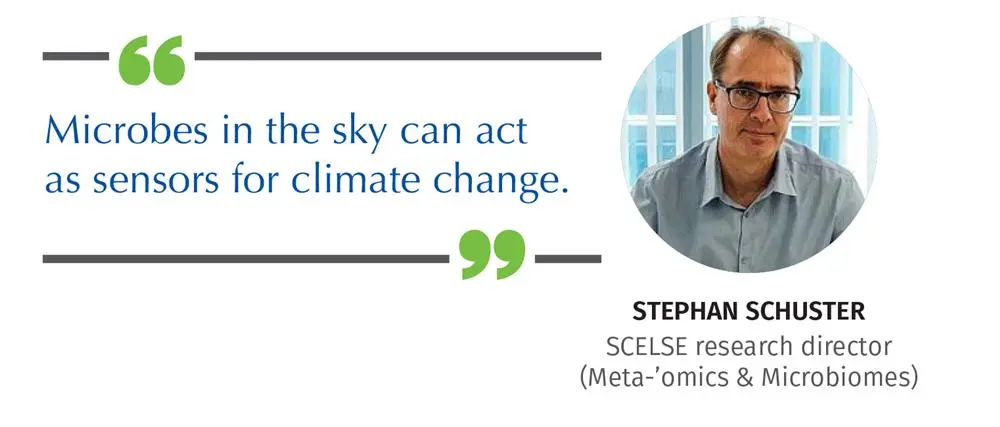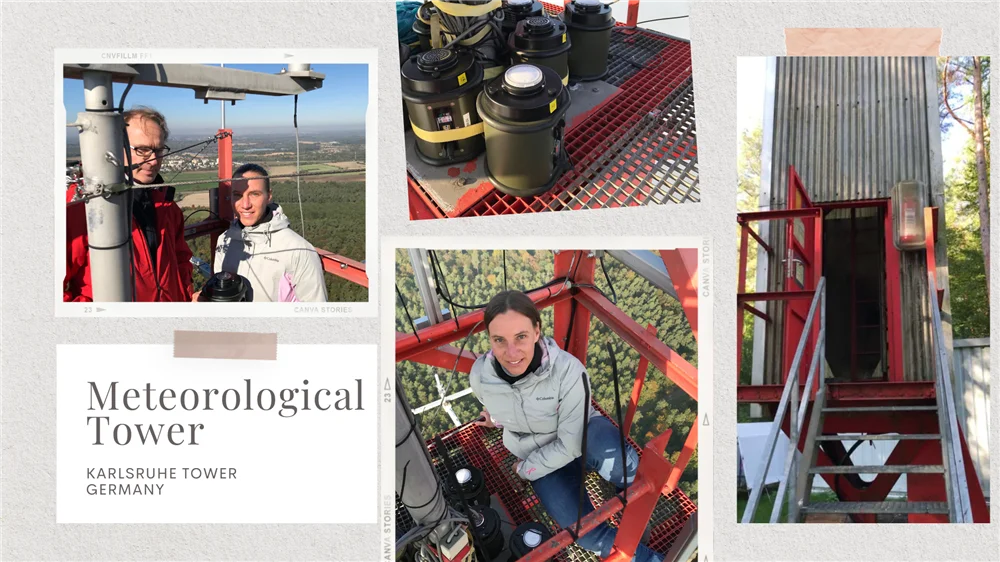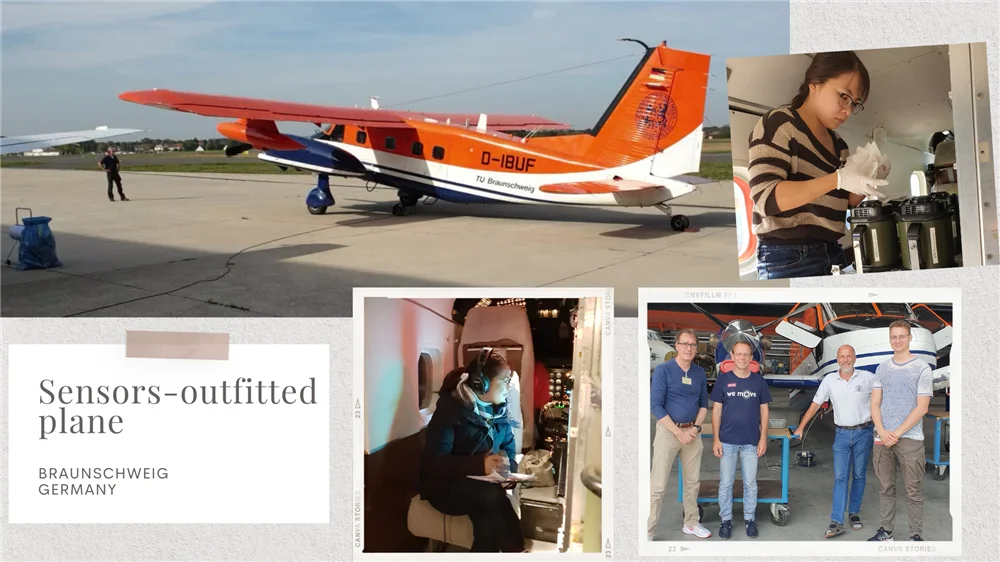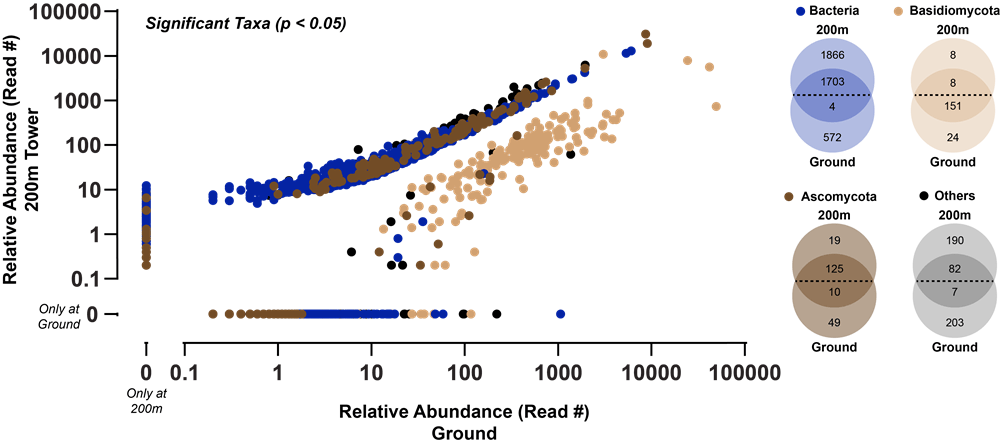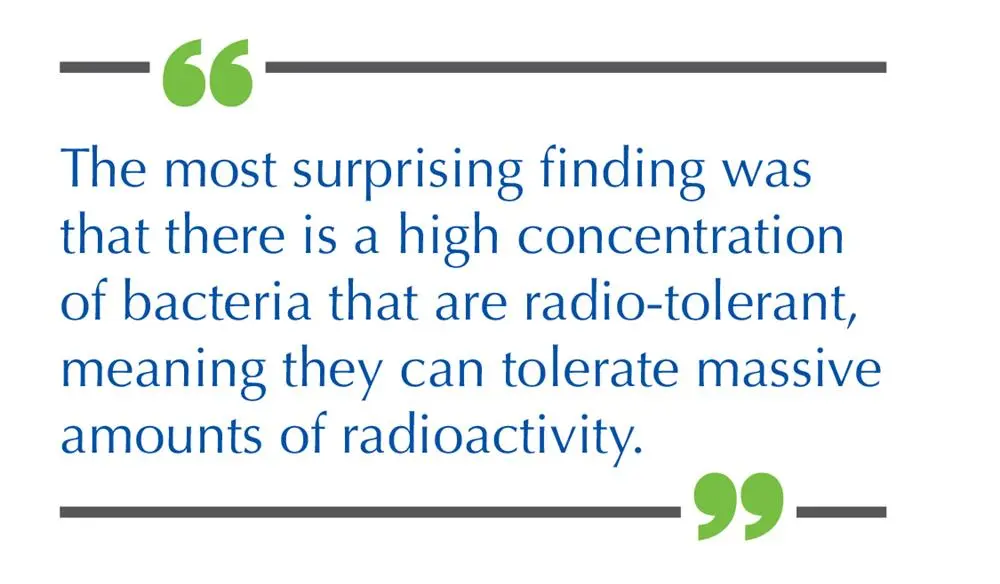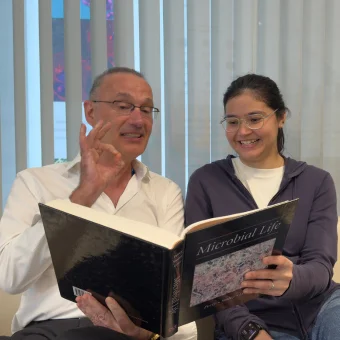(Don’t) Look up – there are microbes in the sky!
Scientists around the world have been studying climate change for decades, foretelling dire impacts on our ecosystems. For the first time, SCELSE scientists have shown that airborne microorganisms in our atmospheric ecosystem will also be impacted.

SCELSE researchers (L-R: Dr Daniela Moses, Prof Stephan Schuster, Dr Irvan Luhung and Dr Elena Gusareva) have devised
a “vertical map” of airborne microorganisms that indicates how global warming will impact global ecosystems.
- Featured
- 22 Mar 2022
The study “Vertical stratification of the air microbiome in the lower troposphere” was published in the Proceedings of the National Academy of Sciences by a team of interdisciplinary scientists led by SCELSE research director (Meta-’omics & Microbiomes) Prof Stephan Schuster. We spoke to him to learn more.
Could you tell us more about this breakthrough?
It became possible for the first time to look at the stratification, or distribution, of microbial organisms in the atmosphere. We investigated from ground level to an altitude of 3,500 metres using a meteorological tower, an airplane fitted with sensors.
We combined this with the latest air sampling technology to collect airborne biomass. Then, using metagenomics sequencing, we determined the composition in terms of the taxonomy and the abundance of the microorganisms in a height dependent manner.
Is this the first time this kind of study has been done?
While our finding is novel, we do stand on the shoulders of giants. These being the aeronautic pioneers such as Charles Lindberg who, in 1921 – 23 flew an airplane to the same height as we did (3,500m), and used sticky tape to pin down fungal spores to investigate how they might impact the yield of agricultural crops in the US.
Can you tell us about the vertical map?
This is the first such map produced in a height stratified way – so we can see how the organisms in several thousand metres height differ from those we encounter on the surface of the planet.
By combining the meteorological data with our biological data, we showed that atmospheric turbulence is a temperature-driven mechanism responsible for mixing the air from the ground up, as well as in the atmosphere up to high altitudes.
This mixing results in the microorganisms being globally distributed, some of which will reach the surface and impact terrestrial and aquatic ecosystems. A significant proportion will not come down below the planetary boundary layer. Therefore, the sky becomes the sink.
How would the impact of increased global warming affect the air microbiome?
The key observation from our research is that the cycle we experience (the diel cycle of the air microbiome) is ground based. Once you go to a height of 800-1,000m, microbial community structure does not differ between day and night.
The reason for this difference is that the temperature at these heights remain constant regardless of it being, day and night is the same.
Once we understand that temperature is the only driving physical parameter that plays a role in changes of the air microbiome, it becomes apparent that if the atmosphere warms up, the composition of the air microbiome globally will change.
There are two potential ways this can affect us:
1) Susceptible patients with respiratory syndromes may suffer the effects of potentially more pathogens in the air.
2) Human society as a whole may be affected – global warming affects the microbial ecosystem in the air, which in turn affects ecosystem function in the terrestrial and aquatic habitats. Changes in the ecosystems can affect the yield of crops, along with changes in planetary carbon cycling and processes that have benefited us
over eons. This can then affect our food supply.
Were the findings surprising?
We were surprised to see that the diel cycle that we described in great detail on the ground so rapidly decreased. We were also quite surprised with how stratified microbial communities are.
In a way, you can say there is a cloud of bacteria living up in the sky. The fungal organisms that are so important for our ecosystems are restricted to the lower ground air layers.
The most surprising finding was that there is a high concentration of bacteria that are radio-tolerant, meaning they can tolerate massive amounts of radioactivity. We could show that there is a 20 times higher concentration of this bacteria at several thousand metres height compared to the ground, and that there is no day-night difference for that.
Collaboration is key and made it possible …
… to directly pair our meteorological measurements for the first time ever with that of the biological measurements.
This was made possible by our international collaborators: Karlsruhe Institute of Technology and the Institute for Flight Guidance from the Technological University in Braunschweig.
By combining the skills of meteorologists, climate researchers, skilled pilots (who could fly as low as 300m during day and night), and scientists that developed sampling systems for the airplane; with that of SCELSE’s expertise in air sampling, metagenomics and computational analysis – we were able to produce the microbial
map of the skies.
We are also grateful to the institutional funding provided by SCELSE, which enabled such an outrageous, adventurous research setting. Many thanks too to SCELSE’s director Staffan Kjelleberg for supporting the project.
What’s next?
The next step would be to repeat this sampling in different climatic settings. For instance, in the tropics here in Singapore the scales and boundaries we have described will be different compared to that of a temperate or polar setting. Arctic and desert settings will also be interesting to investigate.
